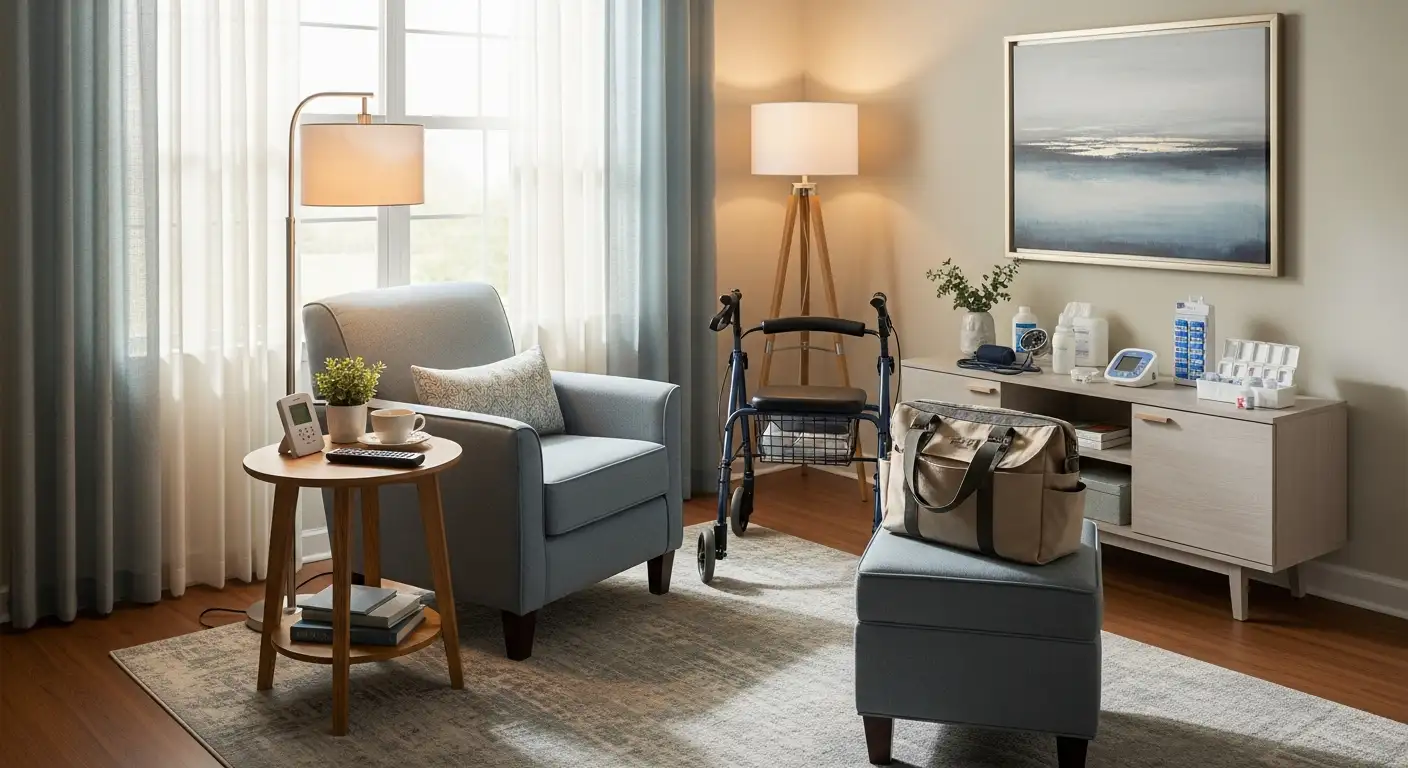A New Era of Consumer-Directed Medicaid Care
Medicaid waiver programs across the United States are pioneering a transformative approach to home care by empowering enrollees to direct their services, including hiring and managing family caregivers. This shift in care methodology not only enhances quality of life but also supports workforce needs and health equity. Below, we explore the success stories, frameworks, and benefits of consumer-directed Medicaid programs that are reshaping in-home care for the elderly and those with disabilities.
Consumer-Directed Care: Empowering Medicaid Enrollees
What is Consumer-Directed Care in Medicaid?
Consumer-directed care programs in Medicaid allow enrollees to take charge of their personal care services by hiring and managing their caregivers. This often includes the ability to contract family members to provide home-based support, which gives recipients greater autonomy and control over their care arrangements.
How Do Family Caregivers Fit Into Medicaid's Approach?
Family caregivers play a significant role in these programs. Many states reimburse family members for providing personal care, recognizing their vital contribution. For instance, about 30% of Connecticut's enrollees in the Community First Choice option use family caregivers. Florida’s CDC+ program explicitly encourages hiring family members, enhancing personalized and comfortable care.
How Much Control Do Enrollees Have?
Enrollees can select, train, supervise, and if needed, dismiss their caregivers. This authority extends to managing the care plan and even training the caregiver based on individual needs. States support this by providing services facilitators and streamlined enrollment to reduce barriers, promoting the ability of enrollees to shape their care experience.
These consumer-directed frameworks enhance quality of life by offering culturally competent, personalized care that meets unique preferences, helping individuals live independently and with dignity.
Medicaid Waivers Enabling Self-Direction: Key Authorities
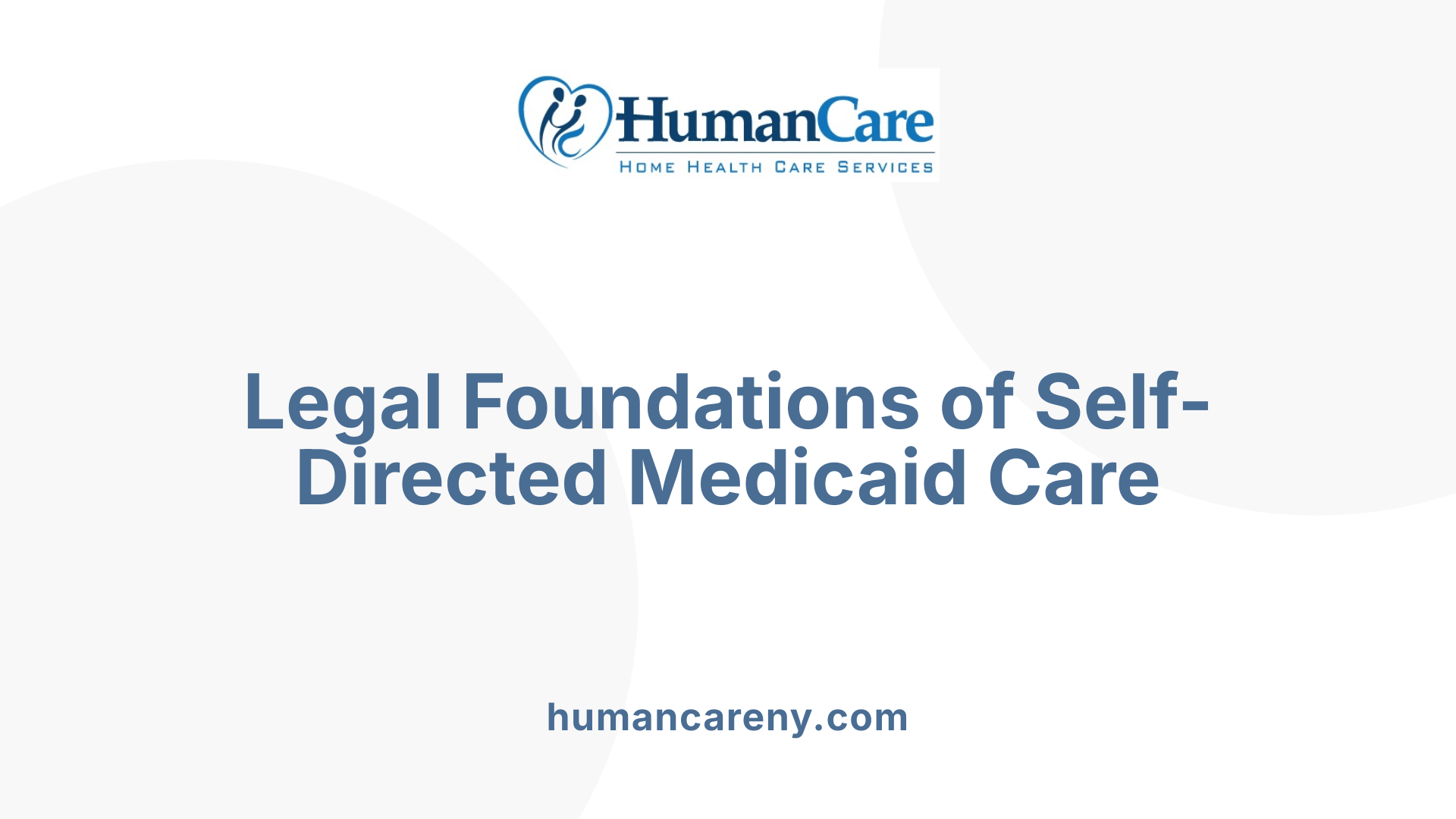
What Medicaid Waivers Support Consumer Direction?
Medicaid consumer-directed care is supported by several types of waivers and plan options that allow enrollees flexibility in managing their personal care services. The primary Medicaid authorities employed include 1915(c) waivers, 1915(k) Community First Choice (CFC), 1915(i) state plan options, 1915(j) self-directed personal assistance services, and 1115 demonstration waivers. Each of these enables states to offer consumer-directed care programs tailored to their populations' needs.
What Roles Do Specific Waivers Play?
1915(c) Waivers: These offer long-term services and supports, often including home and community-based services. Many states use 1915(c) waivers to implement participant-directed options that let enrollees hire and manage their own caregivers.
1915(k) Community First Choice (CFC): This provides an entitlement to personal assistance services with consumer direction options under the state plan, enabling enrollees to hire, supervise, and train caregivers, including family members.
1915(i) State Plan Option: This allows states to provide home and community-based services outside of waivers, including consumer-directed services.
1915(j) Self-Directed Personal Assistance Services: This option supports consumer control over personal care services, emphasizing enrollee authority.
1115 Demonstration Waivers: These can be used innovatively to fund broader consumer-directed initiatives and include flexibility in service design, such as managed care participant-directed options.
How Do These Waivers Reimburse Family Caregivers?
Medicaid waivers commonly authorize payment to family caregivers under consumer-directed programs. For example, Connecticut uses the 1915(k) CFC option to pay family members for personal care, where about 30% of users engage family caregivers. Florida's 1915(b)/(c) managed care waiver includes participant-directed options allowing enrollees to hire family members, with plans overseeing payments. Virginia's CPA Plus program, using a 1915b/c waiver, reimburses relatives other than spouses or parents of minors and recently expanded family caregiver participation due to the pandemic.
Overall, these waivers allow states to support self-direction and address workforce challenges by enabling participants to compensate trusted family caregivers, enhancing personalized and culturally sensitive care.
Connecticut's Community First Choice: A Model of Family Engagement
What is the 1915(k) Community First Choice option in Connecticut?
Connecticut offers the 1915(k) Community First Choice (CFC) Medicaid option, which allows enrollees to hire, supervise, and train their own personal care staff. This program emphasizes consumer direction, giving individuals control over who provides their care and how it is delivered.
How many enrollees use family caregivers under this program?
Approximately 30% of Connecticut’s Community First Choice users engage family members as their caregivers. This significant percentage reflects the program’s support for family involvement in home-based personal care.
How does enrollee control work in training and supervision?
Enrollees have the authority to manage their caregivers directly, including family members. They are responsible for training their caregivers according to their specific needs and supervising their caregiving activities. This control ensures a personalized approach to care and fosters trust and cultural competency within the caregiving relationship.
Connecticut’s Community First Choice program is a strong example of how Medicaid authorities can empower enrollees to tailor their care using family caregivers, improving both the independence and quality of home care services.
Florida’s CDC+: Combining Flexibility with Managed Care Support
What is Florida’s CDC+ program?
Florida’s CDC+ (Consumer Directed Care Plus) program is a Medicaid-funded option that allows seniors to hire and manage their own caregivers, including family members, to provide personalized home care.
How do seniors hire and pay family caregivers?
Eligible seniors can select caregivers based on personal trust and familiarity, including friends and relatives. Caregivers receive payment through a fiscal intermediary, with typical hourly rates ranging from $10 to $15. This flexibility supports comfort and tailored care without the need for formal certifications.
What role does the Florida Agency for Health Care Administration (AHCA) play?
The AHCA administers the CDC+ program by overseeing eligibility assessments, offering guidance, and providing ongoing support to participants. They ensure seniors receive the right resources to effectively manage their care.
How does the assessment and approval process work?
Medicaid or managed care organizations conduct thorough assessments to determine eligibility for CDC+. Upon approval, seniors receive authorization to select and employ their preferred caregivers under the program’s guidelines.
How are hourly rates and payments handled?
Family caregivers are paid through a fiscal intermediary process, ensuring proper financial management and compliance. This pay structure provides a reliable income for caregivers while allowing seniors to maintain control over their care services.
Virginia's CPA Plus: Expanding Family Caregiver Eligibility
What is the 1915b/c waiver consumer-directed option in Virginia?
Virginia's CPA Plus program operates under the 1915b/c Medicaid waiver, offering a consumer-directed care option that empowers enrollees to personally manage their care. This program allows participants to select and supervise their caregivers, providing a tailored, home-based personal care experience.
How are family caregivers reimbursed beyond spouses and parents?
Uniquely, CPA Plus reimburses relatives who are not just spouses or parents of minors. This broadens eligibility, enabling siblings, adult children, or other family members to be financially compensated for providing personal care. This approach recognizes diverse family caregiving arrangements and helps fill workforce gaps in direct care.
How has COVID-19 changed family caregiver participation in CPA Plus?
The COVID-19 pandemic prompted enhanced flexibility within CPA Plus, facilitating increased family participation in caregiving roles. These modifications expedited enrollment processes and lowered barriers, recognizing the growing reliance on family caregivers during this public health crisis. The changes support safer, culturally competent care by trusted, known providers.
Virginia's focus on consumer-directed care through CPA Plus advances personalized support and aligns with evolving Medicaid trends to sustain caregivers and improve health outcomes.
Supporting Roles: Services Facilitators in Consumer-Directed Care
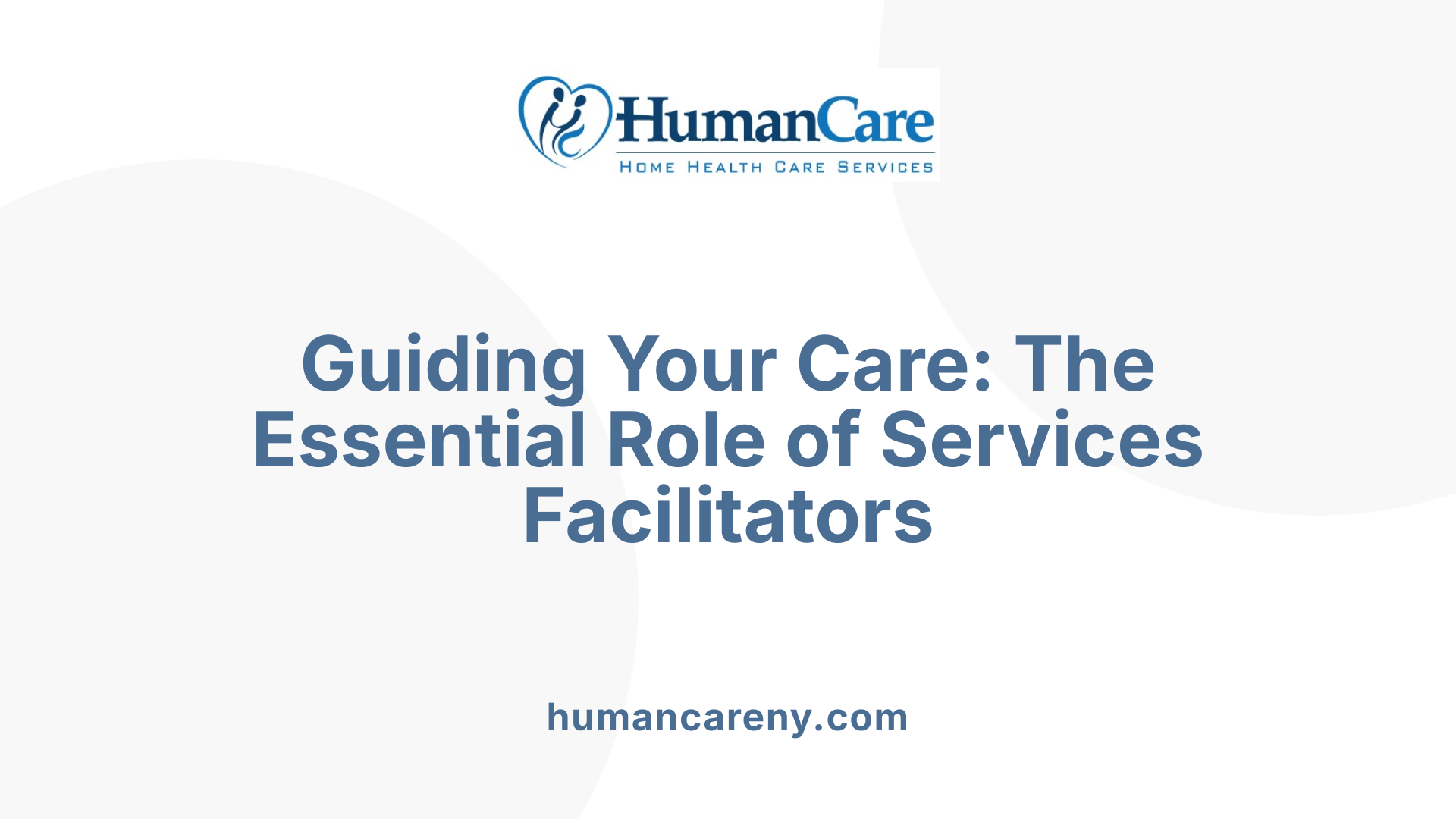
What role do services facilitators play in planning and training?
Services facilitators are essential in Medicaid consumer-directed care programs. They assist enrollees with detailed planning and provide training that helps individuals understand how to hire, train, and manage their own caregivers, including family members. This guidance ensures that enrollees can confidently undertake responsibilities of care management tailored to their unique needs.
How do services facilitators support managing consumer-directed care?
Beyond training, services facilitators offer ongoing management support. They help enrollees organize schedules, understand payment processes, and navigate state-specific program requirements. Facilitators also help resolve issues that arise between caregivers and recipients, making the home care experience smoother and more effective.
Why are services facilitators important for program success?
The success of consumer-directed care programs heavily depends on the support provided by services facilitators. Their assistance reduces administrative burdens on consumers, mitigates potential mismanagement or confusion, and promotes adherence to program guidelines. This support network encourages greater enrollee participation and helps sustain high-quality, individualized care while promoting the financial and operational integrity of Medicaid programs.
Improving Quality and Equity Through Consumer-Directed Services
How Do Consumer-Directed Medicaid Programs Improve Quality of Life and Health Outcomes?
Consumer-directed Medicaid programs empower enrollees to manage their own care by hiring and supervising personal caregivers, including family members. This autonomy allows individuals to tailor care precisely to their needs, fostering better health outcomes and enhancing quality of life. By selecting trusted caregivers who understand their unique preferences, enrollees often experience more personalized attention and comfort, which supports physical and emotional well-being.
In What Ways Do These Programs Enable Culturally Competent and Tailored Care?
Because participants choose caregivers from their own communities or families, care often reflects the enrollee’s cultural, linguistic, and personal preferences. This approach promotes a deeper understanding of cultural values and practices, resulting in more respectful and effective support. Tailored training and planning services further help caregivers align care to the individual’s lifestyle and health requirements, ensuring services are highly responsive and appropriate.
How Do Consumer-Directed Services Promote Health Equity in Home-Based Care?
Consumer-directed programs increase access to care for diverse populations by allowing flexibility in caregiver selection and service delivery. By reimbursing family members and familiar caregivers, states help reduce barriers faced by marginalized groups, including language and cultural disconnects. Furthermore, these programs contribute to narrowing health disparities by supporting options that honor the enrollee’s background and social determinants of health, ultimately promoting equity within Medicaid home-based services.
Combating Fraud and Ensuring Safety: Use of Electronic Visit Verification and Background Checks
What Is Electronic Visit Verification (EVV) and Why Is It Important?
Electronic Visit Verification (EVV) systems are technology tools used by Medicaid programs to confirm that home care services are delivered as scheduled. They typically require caregivers to check in and out electronically at a care recipient's home, helping verify the time and location of service. This system plays a crucial role in preventing fraud and ensuring that enrollees receive their authorized care.
How Do Background Checks Enhance Caregiver Safety?
Background checks are mandatory screenings of caregivers before they begin providing services. They help identify any history of abuse, neglect, or criminal activity, thereby protecting vulnerable individuals from potentially unsafe caregivers. These checks are a foundational safety measure within Medicaid consumer-directed care programs, promoting trust and security in the caregiving relationship.
How Do EVV and Background Checks Support Program Integrity?
By implementing EVV systems alongside comprehensive background checks, Medicaid consumer-directed care programs create multiple layers of oversight. EVV helps detect and prevent fraudulent billing or timekeeping, while background checks ensure that only qualified and safe caregivers are authorized. Together, these tools increase program accountability, protect consumer safety, and strengthen confidence among enrollees and their families.
These safeguards are particularly important as consumer-directed care allows enrollees to hire family members, who may not have traditional caregiver training but are essential for personalized, culturally competent care. Enhanced verification and safety measures help balance flexibility with responsible stewardship of Medicaid funds.
Family Caregiving in the Time of COVID-19: Expanded Roles and Support
How Has the COVID-19 Pandemic Increased Reliance on Family Caregivers?
The COVID-19 pandemic significantly increased the reliance on family caregivers as many traditional home care services faced shortages or interruptions. Family members stepped in to provide essential support, helping vulnerable populations continue living safely at home.
What Adjustments Have Medicaid Programs Made to Expedite Enrollment and Support?
In response to the pandemic, Medicaid consumer-directed care programs expedited enrollment processes to more quickly connect enrollees with family caregivers. Flexibilities were introduced to ease restrictions, allowing faster hiring and reimbursement of family members to meet rising care demands.
How Do Programs Support Family Caregiver Participation During Health Crises?
States enhanced support services such as training, services facilitation, and respite care to assist family caregivers during health emergencies. These supports ensure caregivers are equipped to provide quality, culturally competent care while managing increased responsibilities under stressful conditions.
Expedited enrollment, tailored assistance, and flexible program requirements during COVID-19 have expanded family caregivers' roles in Medicaid consumer-directed care, helping enrollees maintain health and independence amid challenging times.
Medical, Emotional, and Respite Supports for Family Caregivers
What training and support do family caregivers receive?
Medicaid programs recognize that family caregivers need more than just payment for their efforts. Many states provide training tailored to the specific needs of the care recipient. This training helps caregivers gain the skills necessary to provide effective, safe, and culturally competent care. Additionally, support groups offer emotional and social support, connecting caregivers with peers and resources to reduce feelings of isolation and stress.
What types of respite care are available to relieve family caregivers?
Respite care is one of the most common forms of assistance provided to family caregivers through Medicaid. Forty-seven states offer various types of respite options such as hourly, daily, weekly, and even institutional respite care. These services allow caregivers to take temporary breaks from their caregiving duties, promoting their own well-being and preventing burnout.
How does Medicaid assist caregivers beyond payments?
Beyond direct compensation, Medicaid supports caregivers through a range of services including ongoing training, access to support networks, and respite care. Many states have service facilitators who assist with care planning, training, and administrative tasks to ease caregiving responsibilities. Programs also provide tools and guidance to help caregivers manage care effectively, ultimately improving outcomes for both caregivers and care recipients.
Nationwide Adoption: States Allowing Self-Direction and Family Caregiver Payments
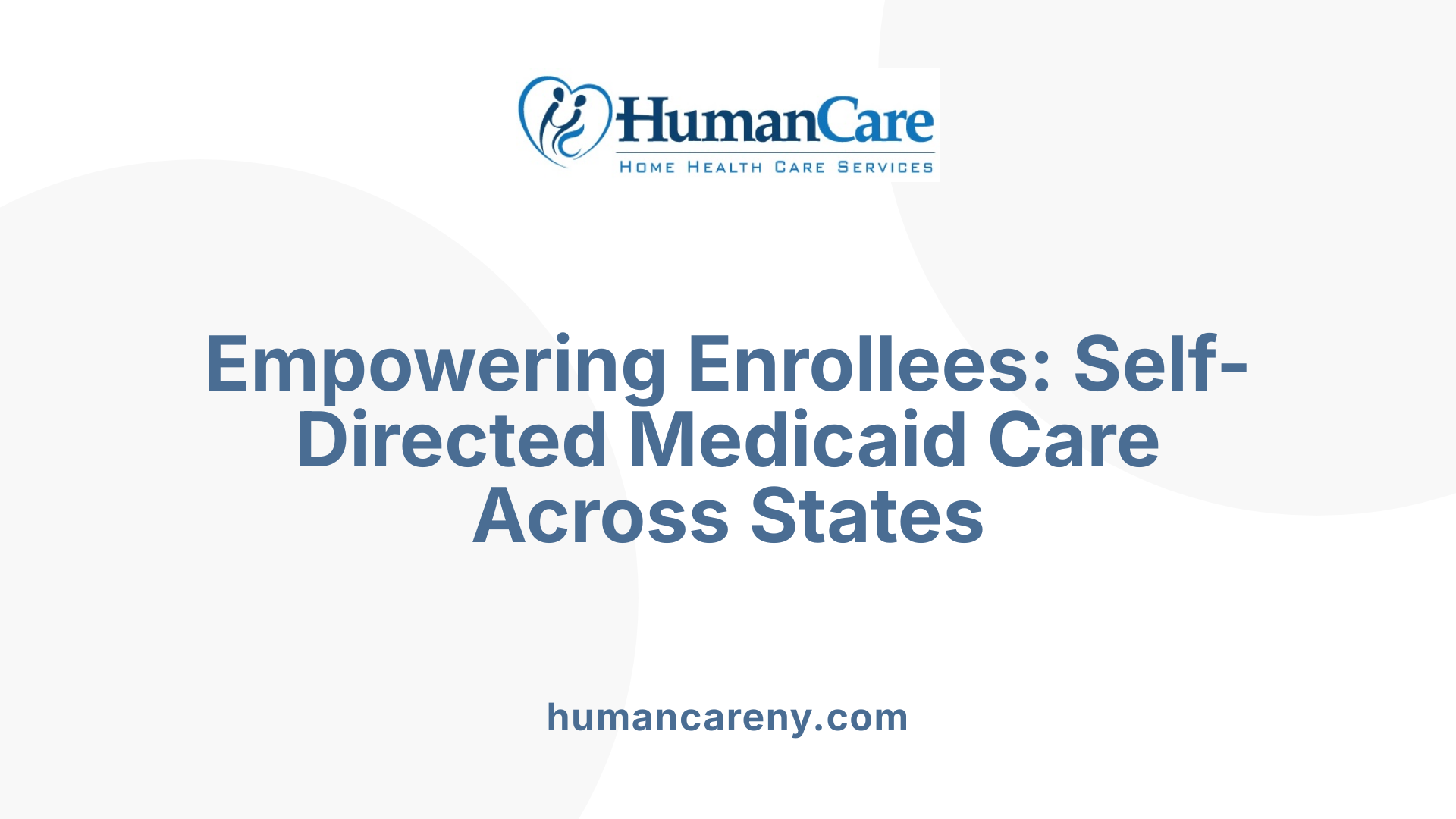
States Enabling Self-Direction of Home Care
Most states across the U.S. have embraced Medicaid consumer-directed care programs that empower enrollees to manage their own home-based personal care. Except Alaska, all reporting states allow Medicaid enrollees to self-direct their home care services. This means enrollees can select, train, and when necessary, dismiss their caregivers, giving them greater control over the supports they receive.
Common Policies Allowing Enrollees to Select and Manage Caregivers
Medicaid consumer-directed care programs operate under various state authorities, particularly through 1915(c) waivers, 1915(k) Community First Choice options, and 1115 waivers. Enrollees in these programs can hire and supervise caregivers, including family members. Supporting services facilitators assist enrollees with care planning, training, and management, ensuring personalized and culturally competent care.
For example, Connecticut uses a 1915(k) CFC option where about 30% of enrollees choose family caregivers. Florida’s Medicaid managed care waiver includes a participant-directed option allowing enrollee management of care with the support of managed care plans. Virginia's CPA Plus program also reimburses family caregivers, excluding spouses or parents of minors, with flexibility increasing since the COVID-19 pandemic.
Payments to Family Caregivers Across States
All responding states provide payments to family caregivers under some circumstances. Particularly common is payment for caregivers of individuals with intellectual or developmental disabilities, with 44 states allowing such compensation. Structured family caregiving programs paying family members a per diem for their care exist in states like Connecticut, Georgia, Indiana, and North Dakota.
Many states use these programs to address workforce shortages worsened by the pandemic and low wages. Support such as respite care enhances caregiver capacity, and programs like Florida’s CDC+ offer hourly payments of $10 to $15 to family caregivers, improving seniors’ access to trusted, personalized care while making home care cost-effective and sustainable.
Addressing Direct Care Workforce Shortages Through Family Caregiver Payments
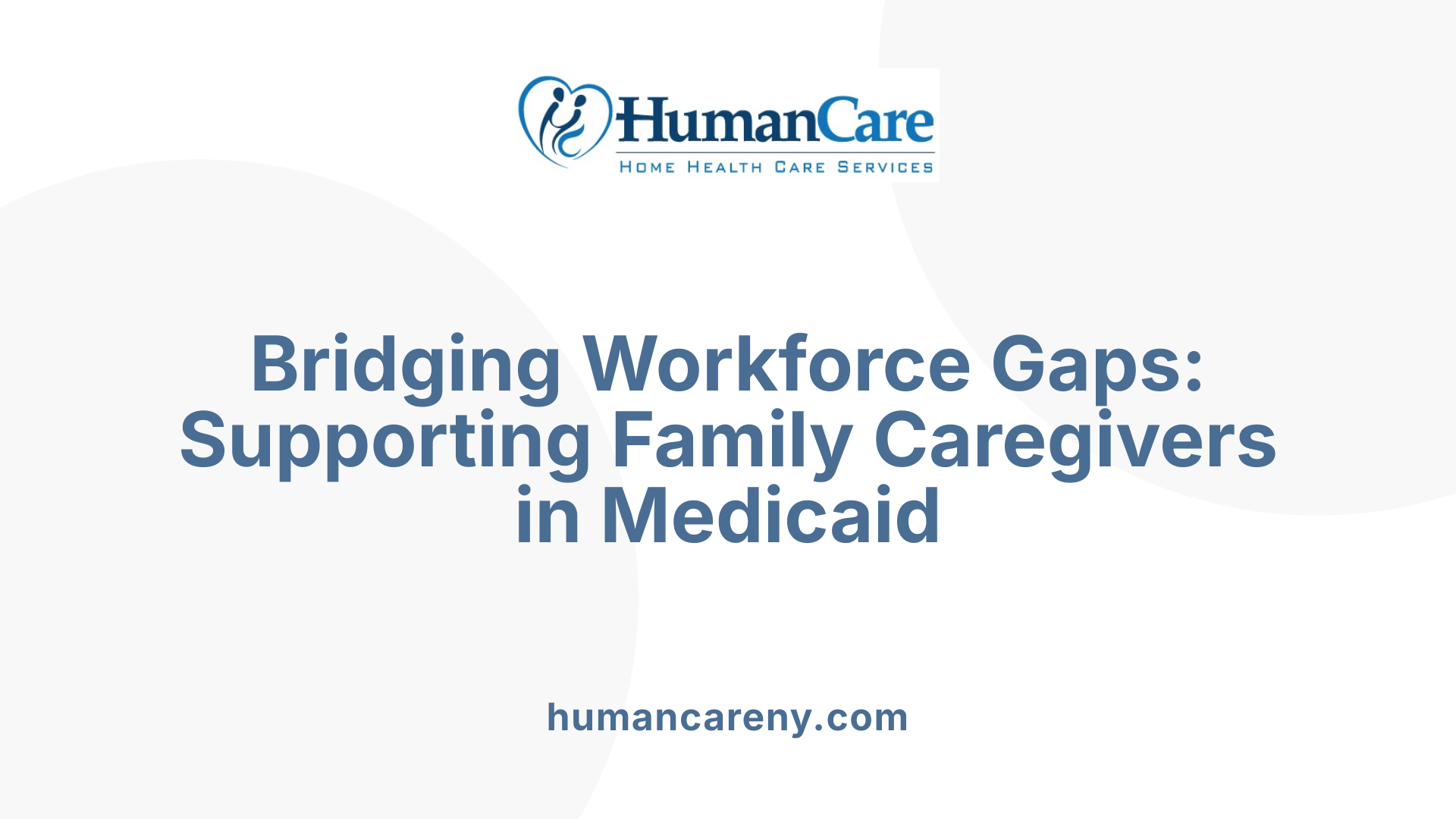
What workforce challenges have worsened shortages in direct care?
The direct care workforce faces significant challenges, including low wages and increased demand for services. These issues have been further intensified by the COVID-19 pandemic, which disrupted traditional caregiving arrangements and limited workforce availability.
How are family caregiver payments used to ease workforce shortages?
To address these shortages, many states have expanded Medicaid programs to allow payments to family caregivers. These payments provide financial support to relatives who provide personal care, helping to fill gaps caused by a shrinking pool of professional caregivers. Programs such as Florida's CDC+ and various waiver options across states enable family members to be paid for caregiving duties, offering a flexible alternative to traditional home care.
What impact has this approach had on sustaining home care access?
By compensating family caregivers, states support continued access to home care services, which promotes aging in place and improves quality of life. This strategy also helps reduce caregiver burnout by supplementing income, making it more feasible for families to provide care. Ultimately, paying family caregivers helps maintain consistent care availability, ensuring enrollees can receive personalized support tailored to their needs even amidst workforce shortages.
Diverse Models of Structured Family Caregiving Programs
Per diem compensation models for family caregivers
Several states offer structured family caregiving programs where family members receive per diem payments for providing care. This approach ensures that unpaid caregivers are compensated in a consistent, daily rate, recognizing the extensive support they provide to their loved ones.
Examples from Connecticut, Georgia, Indiana, Louisiana, North Carolina, North Dakota, South Dakota
States like Connecticut, Georgia, Indiana, Louisiana, North Carolina, North Dakota, and South Dakota have implemented such per diem compensation models. These programs enable family members to be officially paid caregivers, providing them with financial relief while encouraging sustained caregiving at home. For instance, Connecticut’s program supports family caregiving as part of their Medicaid consumer-directed care initiatives, which help both seniors and people with disabilities remain in their community settings.
Supporting unpaid caregivers
Beyond direct payments, these structured programs support unpaid caregivers by providing critical resources and training tailored to the care recipient’s needs. This support helps reduce caregiver strain and promotes higher quality care. By compensating family caregivers and offering assistance services, states effectively recognize and bolster the vital role families play in home-based care.
CDC+: Enhancing Personalized Care and Comfort for Florida Seniors
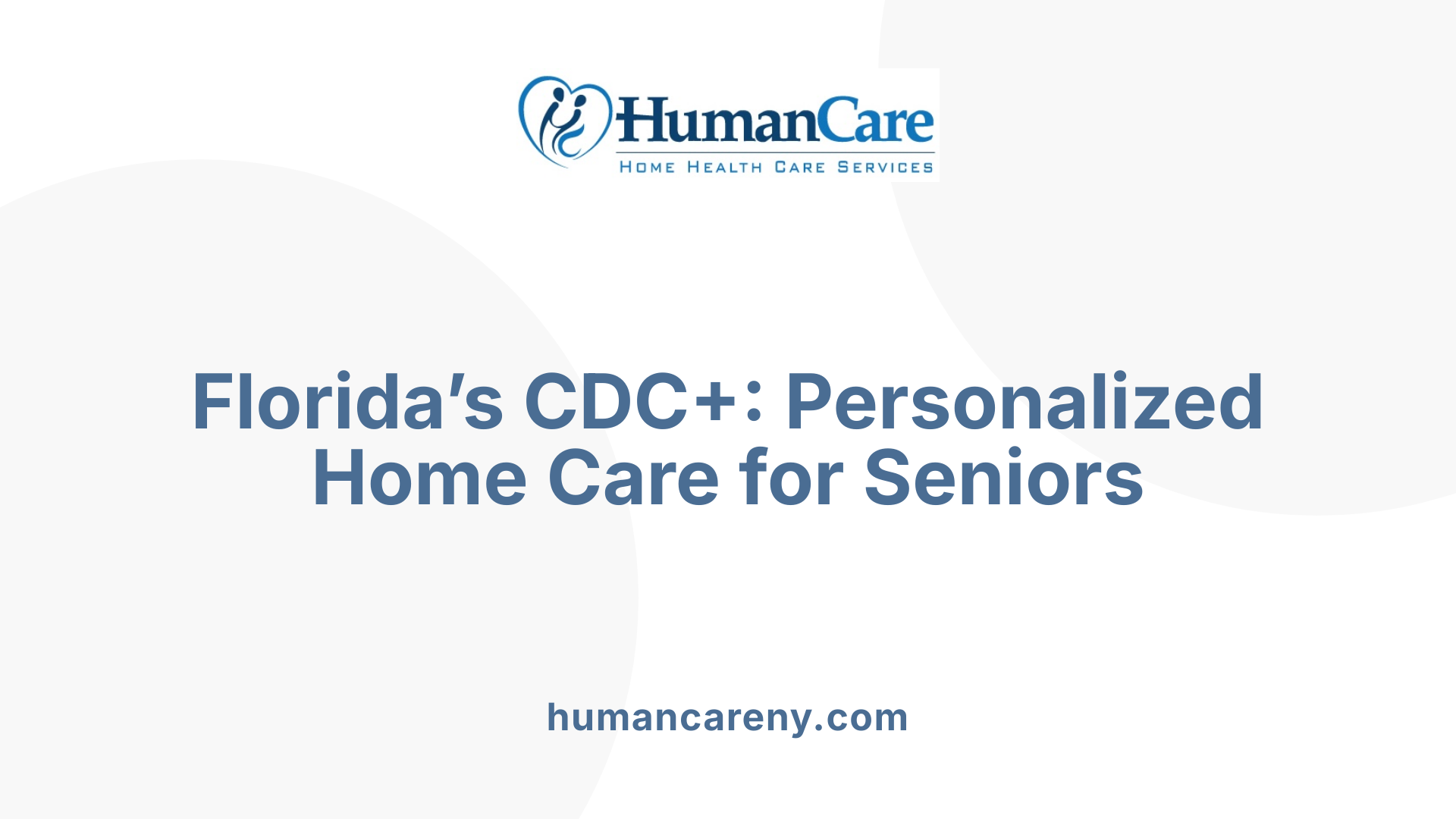
How Can Seniors Choose Their Caregivers in the CDC+ Program?
The CDC+ program in Florida allows seniors to select their own caregivers, including family members and friends. This self-direction empowers seniors to maintain control over who provides their personal care services. The process begins with an assessment by Medicaid or managed care organizations for eligibility and care needs. Once approved, seniors have the freedom to hire caregivers they trust and feel comfortable with, enhancing their everyday care experience.
What Are the Benefits of Caregiver Familiarity and Trust?
Choosing caregivers who are familiar and trusted individuals, such as family or friends, significantly improves the quality of care. Familiarity fosters a sense of security and emotional comfort, which can enhance seniors' overall well-being. This personalized approach ensures that care aligns with individual preferences and cultural needs, supporting better health outcomes and satisfaction.
How Does Medicaid Funding Reduce Financial Hardships?
Medicaid funds the compensation of family caregivers under the CDC+ program, typically paying caregivers between $10 and $15 per hour. This financial support helps reduce the economic burden on families who might otherwise provide unpaid care. Payments are handled through a fiscal intermediary, streamlining compensation and ensuring caregivers are fairly reimbursed. This cost-effective model allows seniors to receive personalized home care without imposing significant financial strain on their families.
Simplified Requirements: Training Tailored to Seniors' Needs in CDC+
No formal certifications required for family caregivers
In Florida's CDC+ program, family caregivers are not required to have any formal training or certifications to provide care. This absence of rigid qualification criteria lowers barriers to entry, making it easier for family members to become paid caregivers. It acknowledges the value of personal relationships and the unique knowledge family members have about the needs of their loved ones.
Customized training based on individual senior needs
While formal certifications are not mandatory, CDC+ emphasizes training tailored specifically to each senior's requirements. Caregivers receive guidance and instructions designed around the particular health conditions, preferences, and routines of the person they care for. This personalized approach ensures that while caregivers might come without professional credentials, they can still deliver quality, competent care sensitive to the individual's situation.
Implications for accessibility and quality
The flexible training model increases accessibility for family caregivers who might otherwise be excluded by strict certification rules. It empowers families to manage care with direct involvement and customized instruction, fostering better comfort and trust. However, it also raises considerations about maintaining consistent care quality. The CDC+ program addresses this balance by offering ongoing support from the Florida Agency for Health Care Administration, including assessments and resource provision. This approach helps ensure that tailored training meets seniors’ needs effectively while supporting caregiver development and the overall success of home-based consumer-directed care.
Managed Care Plans' Oversight in Medicaid Self-Directed Programs
Role of Managed Care in Florida and Other States
In Florida, Medicaid operates a statewide managed care waiver under Sections 1915(b)/(c), which includes a participant-directed option. Managed care plans play a central role in this model by overseeing both service delivery and payment processes. This framework ensures that enrollees can self-direct care, including hiring family members as caregivers, with the plans monitoring quality and compliance.
Other states using self-directed Medicaid programs also incorporate managed care entities to varying extents. These organizations coordinate care management, provide enrollee support, and implement safeguards, enabling the program to balance flexibility with accountability.
Responsibilities for Service Delivery and Payment
Managed care plans are responsible for processing payments to caregivers, including family members, ensuring timely compensation and adherence to Medicaid rules. They manage enrollee assessments, monitor care plans, and ensure services meet regulatory standards.
This oversight includes verifying that caregivers receive adequate training and support, and that service deliveries align with participants’ healthcare needs and preferences, fostering personal and culturally competent care.
Balancing Enrollee Autonomy with Oversight
While consumer-directed programs empower enrollees to select, train, and manage their caregivers, managed care plans ensure protections against fraud and abuse through tools like electronic visit verification and background checks. This balance maintains enrollee independence while safeguarding program integrity.
In summary, managed care plans serve as essential partners in Medicaid consumer-directed care. They provide structure and support within the flexible framework, allowing enrollees to benefit from tailored, family-inclusive caregiving while ensuring quality, compliance, and financial stewardship.
Economic and Social Impacts of Consumer-Directed Medicaid Programs
How Cost-Effective Are Family Caregiver Payments?
Medicaid consumer-directed care programs, such as Florida's CDC+, demonstrate cost effectiveness by enabling seniors to hire family members as paid caregivers. This approach provides personalized care at a lower cost compared to institutional care. Payments typically range from $10 to $15 per hour, with Medicaid funding these compensations through fiscal intermediaries, reducing administrative burden. By compensating family members, states address workforce shortages in direct care without the high costs associated with traditional caregiving agencies.
How Do These Programs Enhance Seniors' Ability to Age in Place?
Consumer-directed programs empower seniors to stay safely and comfortably in their homes. By selecting familiar caregivers—often trusted family or friends—enrollees receive culturally competent and individualized care tailored to their unique needs. Support such as tailored training and ongoing assistance from services facilitators further promotes independence and quality of life. This enhanced personal support enables seniors to maintain autonomy and social connections in their community.
How Do Consumer-Directed Programs Reduce Institutionalization and Health System Costs?
By supporting family caregivers through payments, respite care, and training, these Medicaid programs help prevent unnecessary institutionalization. The flexibility to manage and supervise personal care reduces hospital readmissions and long-term care facility stays. This shift alleviates pressure on healthcare systems and leads to significant savings. Additionally, reimbursement for family caregivers particularly aids individuals with intellectual or developmental disabilities, expanding home care alternatives and reducing reliance on costly institutional settings.
Overall, consumer-directed Medicaid programs offer a financially sustainable model that strengthens family caregiving supports, promotes health equity, and helps reduce Medicaid expenditures associated with institutional care.
Future Directions: Expanding Consumer-Directed Care Nationwide
What is the potential for wider adoption of self-directed Medicaid models?
Consumer-directed care models, such as those implemented through Medicaid waivers and state plans, have already shown promising outcomes in enabling more personalized care by allowing enrollees to hire and manage their own caregivers, including family members. Given that all reporting states except Alaska currently permit some form of self-direction, there is significant capacity for broader adoption nationwide. States are motivated to expand these models as they address workforce shortages worsened by the pandemic and low wages. Increasing self-direction supports autonomy while leveraging family and informal caregivers more effectively.
How will consumer-directed care impact the evolving home care workforce?
Expanding consumer-directed programs reshapes the home care workforce by formalizing family caregiving roles, allowing relatives and trusted individuals to be paid caregivers. This can alleviate worker shortages by tapping into a ready pool of caregivers already familiar with their loved ones' needs. The growing use of electronic visit verification and background checks helps maintain oversight, balancing flexibility with safeguards. Programs offering training and respite support to family caregivers also improve caregiver retention and quality of care, helping stabilize the workforce in a challenging environment.
What innovations are emerging to promote person-centered care?
States continue refining consumer-directed care by integrating technological tools like EVV to reduce fraud, while tailoring training to individuals’ unique needs rather than requiring rigid certifications. Programs like Florida’s CDC+ exemplify innovations that empower enrollees to select caregivers from family or friends, enhancing trust and cultural competence. Expanded use of services facilitators provides continuous assistance with care planning and management, making these programs more accessible especially during crises like COVID-19. Future directions will likely emphasize flexibility, personalization, and equity to support diverse enrollee populations nationwide.
Empowering Independence and Caregiver Support: Medicaid's Ongoing Success
Medicaid waiver programs that allow consumer-directed care have demonstrated remarkable success in empowering individuals to tailor their home care to their unique needs and preferences. By enabling enrollees to hire and compensate family caregivers, states have addressed workforce challenges while enriching the care experience through trusted, culturally competent relationships. Supported by services facilitators, training options, and protective measures such as electronic visit verification, these programs safeguard quality while promoting independence. As the nation continues to grapple with aging populations and care demands, consumer-directed Medicaid waivers exemplify a compassionate, innovative path forward for home health care.


